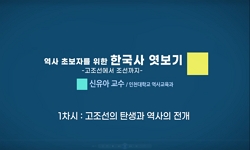The National Museum of Korea keeps artefacts (many of them are merely fragments, although they are valuable as historical materials) collected during the colonial period, including 389 roof tiles that were collected by the National Museum of the Gover...
http://chineseinput.net/에서 pinyin(병음)방식으로 중국어를 변환할 수 있습니다.
변환된 중국어를 복사하여 사용하시면 됩니다.
- 中文 을 입력하시려면 zhongwen을 입력하시고 space를누르시면됩니다.
- 北京 을 입력하시려면 beijing을 입력하시고 space를 누르시면 됩니다.
https://www.riss.kr/link?id=A107024060
- 저자
- 발행기관
- 학술지명
- 권호사항
-
발행연도
2011
-
작성언어
Korean
-
주제어
선리(船里) ; '수국해구선가초(受國蟹口船家草)'명 기와 ; 통일신라 ; 기와가마 ; 한주(漢州) ; Seon-ri ; inscribed Roof ; Unified Silla Period ; roof-tile kiln ; Hanju
-
KDC
900
-
자료형태
학술저널
-
수록면
557-598(42쪽)
- 제공처
- 소장기관
- ※ 대학의 dCollection(지식정보 디지털 유통체계)을 통하여 작성된 목록정보입니다.
-
0
상세조회 -
0
다운로드
부가정보
다국어 초록 (Multilingual Abstract)
The National Museum of Korea keeps artefacts (many of them are merely fragments, although they are valuable as historical materials) collected during the colonial period, including 389 roof tiles that were collected by the National Museum of the Government General of Joseon in Seon-ri, Gwangju after the great flood of 1925, 337 of which contain inscriptions. However, their archaeological context has long been unclear due to a lack of detailed investigations or excavations. Some roof tiles are inscribed with the Chinese characters "(Place name)受國蟹口船家草 (Sugukhaeguseongacho)," which could be interpreted to mean the following: "(Place name) is requested to receive the roof tiles that we are dispatching. They were produced at a (Government-run) kiln near the ferry at the estuary of the river (whose name is associated with crabs)." Thus, it is thought that the place where the roof tiles were produced was Seonri, Gwangju and that they were supplied to the places whose names were stated. A total of twenty place names (for which the roof tiles were produced) inscribed on the roof tiles have been confirmed by the record in the section titled Jiriji (Geographical Book) of Samguksagi (History of the Three Kingdoms). They include areas around Bukhansan Mountain in Seoul, as well as in Yangpyeong, Anseong, Suwon, Gwacheon, Gimpo, Yangju, Goyang, Paju, Pocheon and Hanam in Gyeonggi-do and Incheon; Cheolwon; Gaeseong, Jincheon. Seon-ri roof tiles are thought to have been produced between the mid-8th century (place names were changed following the reorganization of administrative zones in 757) and the early Goryeo Period based on their patterns, changes in the inscriptions, and the place names inscribed upon them. The places to which the roof tiles were supplied generally correspond to the scope of Hanju, one of the nine provinces of Unified Silla. Thus, the roof-tile kiln in Seon-ri, Gwangju is thought to have been a state-run production center that supplied roof tiles from Hanju. The Chinese character 國('Guk') inscribed on the roof tiles corroborates this fact. This shows the characteristics of production and the distribution pattern of roof tiles during the Unified Silla Period.
국문 초록 (Abstract)
국립중앙박물관은 일제강점기 당시 조선총독부박물관이 발굴하거나 지표 채집한 유물 중 대부분 편으로 잔존하고 있는 자료적 성격의 유물을 보관·관리해 왔다. 선리 기와 또한 일제강점�...
국립중앙박물관은 일제강점기 당시 조선총독부박물관이 발굴하거나 지표 채집한 유물 중 대부분 편으로 잔존하고 있는 자료적 성격의 유물을 보관·관리해 왔다. 선리 기와 또한 일제강점기 당시 조선총독부박물관이 1925년 을축년대홍수 이후 발견·수습한 것으로 모두 389점에 이르며, 이 중 337점에서 명문이 확인된다. 하지만 수습에만 거치고 주변에 대한 정밀조사나 발굴조사 등을 실시하지 않아 유적의 성격이 밝혀지지 않았다. 기와에는 ‘(지명)受(國)蟹口船家草’라는 명문이 새겨져 있으며, 이는 ‘게내천 또는 게와 관련된 명칭의 하천 입구에 있는 나루터 부근 국영(가마)에서 제작한 기와를 보내니 (지명)에서 받아라.’는 의미로 해석된다. 이 중 ‘해구(蟹口)’는 게와 관련된 명칭의 하천 입구라는 의미로 기와 발견지 일대가 현재도 게가 살고 있는 지역이라는 점에서 기와 가마가 위치한 곳을 당시에는 ‘해구(蟹口)’라 불렀을 것으로 추정하였다. 따라서 생산지는 ‘해구(蟹口)’, 즉 선리가 되고 공급지는 명문 앞에 있는 각 지명들이 됨을 알 수 있다. 기와에 남아 있는 지명 즉 기와의 공급지는 『삼국사기』 지리지 비정을 통해 모두 19곳이 확인되는데, 이들의 현재지명을 비정한 결과 서울의 북한산 지역과 경기도의 양평·안성·수원·과천·김포·양주·고양·파주·포천·하남과 인천, 강원도 철원, 황해북도 개성지역, 충청북도 진천지역 등으로 확인되었다. 선리 기와는 문양과, 명문의 변화, 기와에 새겨진 지명이 통일신라지명과 고구려지명이 혼재되어 있는 점 등으로 보아 757년 행정구역 개편으로 지명 개명이 완료된 시점인 8세기 중후반부터 통일신라 말 또는 고려 초까지 제작된 것으로 파악된다. 또한, 서울·경기·인천·강원도 철원·황해도 개성 등 공급지역의 범위가 통일신라 9주 중 하나인 한주(漢州)의 범위와 대체로 일치하고 있어 선리의 기와가마는 한주를 공급지역으로 하는 관영공방으로 생각된다. 이는 기와의 명문에 새겨져 있는 ‘국(國)’을 통해서도 충분히 짐작할 수 있는 사실이다. 선리 기와가마가 한주의 관영공방이었을 가능성은 통일신라 당시의 기와 생산과 유통의 일면을 보여주는 것이라 할 수 있다.
목차 (Table of Contents)
- Ⅰ. 머리말
- Ⅱ. 발견 경위 및 유적 위치
- Ⅲ. 선리(船里) 기와의 성격
- 1. 선리 기와의 형식 분류
- 2. 선리 기와의 명문 고찰 및 지명 비정
- Ⅰ. 머리말
- Ⅱ. 발견 경위 및 유적 위치
- Ⅲ. 선리(船里) 기와의 성격
- 1. 선리 기와의 형식 분류
- 2. 선리 기와의 명문 고찰 및 지명 비정
- 3. 선리 기와의 제작 연대
- Ⅳ. 명문을 통해 본 선리 기와의 생산과 유통
- Ⅴ. 맺음말
동일학술지(권/호) 다른 논문
-
- 한국고고미술연구소
- 이일갑
- 2011
-
- 한국고고미술연구소
- 조원교
- 2011
-
- 한국고고미술연구소
- 이원복
- 2011
-
- 한국고고미술연구소
- 윤용희
- 2011




 RISS
RISS



